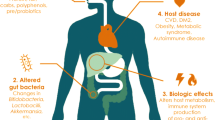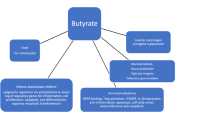Abstract
The soluble dietary fiber from Asparagus officinalis (ASDF) was successively prepared using enzymolysis combined with spray-drying technology. High-performance liquid chromatography analysis showed that ASDF contained two polysaccharide fractions with the average molecular weight of 2.77 × 105 and 6.44 × 103 Da, and was composed of mannose, rhamnose, galacturonic acid, glucose, galactose, and arabinose with a molecular ratio of 19.93:1.02:1.94:32.17:1.00:1.91, respectively. ASDF showed potential in vitro antioxidant activities. The oral administration of ASDF significantly reduced the levels of total cholesterol, triglyceride, and low-density lipoprotein cholesterol in HD-induced mice serum. Furthermore, 16S rRNA gene sequencing analysis showed that ASDF significantly affected the composition of intestinal microbiota, especially reducing the Firmicutes/Bacteroidotetes ratio and the relative abundances of Desulfobacterota, Proteobacteria, Actinobacteriota and increasing that of Muribaculaceae, Bacteroides, and Alloprevotella. These results demonstrated that the intake of ASDF could regulate intestinal microbiota and serum lipid levels in hyperlipidemic conditions.






Similar content being viewed by others
References
Bitter T. A modified uronic acid carbazole reaction. Analytical Biochemistry. 4: 330-334 (1962)
Bradford MM. A rapid and sensitive method for the quantitation of microgram quantities of protein utilizing the principle of protein-dye binding. Analytical Biochemistry. 72: 248-254 (1976)
Bhavnani BR, Cecutti A, Gerulath A, Woolever AC, Berco M. Comparison of the antioxidant effects of equine estrogens, red wine components, vitamin E, and probucol on low-density lipoprotein oxidation in postmenopausal women. Menopause. 25: 1214-1223 (2018)
Cao WX, Chin YX, Chen X, Mi Y, Xue CH, Wang YM, Tang QJ. The role of gut microbiota in the resistance to obesity in mice fed a high fat diet. International Journal of Food Sciences and Nutrition. 71: 453-463 (2020)
Dubois M, Gilles KA, Hamilton JK, Rebers PT, Smith F. Colorimetric method for determination of sugars and related substances. Analytical Chemistry. 28: 350-356 (1956)
Everard MA, Cani PD. Diabetes, obesity and gut microbiota. Best Practice & Research Clinical Gastroenterology. 27: 73-83 (2013)
Guo Q, Wang N, Liu H, Li Z, Lu L, Wang C. The bioactive compounds and biological functions of Asparagus officinalis L.-A review. Journal of Functional Foods. 65: 103727 (2020)
Guo WL, Deng JC, Pan YY, Xu JX, Hong JL, Shi FF, Liu GL, Qian MQ, Bai WD, Zhang W, Liu B, Zhang YY, Luo PJ, Ni L, Rao PF, Lv XC. Hypoglycemic and hypolipidemic activities of Grifola frondosa polysaccharides and their relationships with the modulation of intestinal microflora in diabetic mice induced by high-fat diet and streptozotocin. International Journal Biological Macromolecules. 153: 1231-1240 (2020)
Huang Q, Zhang H, Xue D. Enhancement of the antioxidant and hypolipidemic activities of Puerariae radix by fermentation with Aspergillus niger. Food Science and Biotechnology. 28: 1117-1124 (2019)
Johnson, EL, Heaver, SL, Walters, WA, Ley, RE. Microbiome and metabolic disease: Revisiting the bacterial phylum Bacteroidetes. Journal of Molecular Medicine. 95: 1-8 (2017)
Jin MC, Qian ZY, Yin JY, Xu WT, Zhou X. The role of intestinal microbiota in cardiovascular disease. Journal of Cellular and Molecular Medicine. 23: 2343-2350 (2019)
Kim GB, Seo YM, Kim CH, Paik IK. Effect of dietary prebiotic supplementation on the performance, intestinal microflora, and immune response of broilers. Poultry Science. 90: 75-82 (2011)
Kato K, Odamaki T, Mitsuyama E, Sugahara H, Xiao JZ, Osawa R. Age-related changes in the composition of gut Bifidobacterium species. Current Microbiology. 74: 987-995 (2017)
Lee JW, Lee JH, Yu IH, Gorinstein S, Bae JH, Ku YG. Bioactive compounds, antioxidant and binding activities and spear yield of Asparagus officinalis L. Plant Foods for Human Nutrition. 69: 175-181 (2014)
Liu X, Zhang MS, Guo K, Jia AR, Shi YP, Gao GL, Sun ZL, Liu CH. Cellulase-assisted extraction, characterization, and bioactivity of polysaccharides from Polygonatum odoratum. International Journal Biological Macromolecules. 75: 258-265 (2015)
Li MM, Zhou Y, Zuo L, Nie D, Li XA. Dietary fiber regulates intestinal flora and suppresses liver and systemic inflammation to alleviate liver fibrosis in mice. Nutrition. 81: 110959 (2020)
Li YQ, Ma QT, Wang JK, Li PF, Cheng L, An YC, Duan YH, Dai HY, Wang T, Zhao BS. Relationship between hyperlipidemia and the gut microbiome of rats, characterized using high-throughput sequencing. Journal of Traditional Chinese Medical Sciences. 7: 154-161 (2020)
Liu X, Sun Z, Jia A, Shi Y, Li R, Yang P. Extraction, preliminary characterization and evaluation of in vitro antitumor and antioxidant activities of polysaccharides from Mentha piperita. International Journal of Molecular Sciences. 15: 16302–16319 (2014)
Makki K, Deehan EC, Walter J, Bäckhed F. The impact of dietary fiber on gut microbiota in host health and disease. Cell Host & Microbe. 23: 705-715 (2018)
Navar-Boggan AM, Peterson ED, Ralph B, D'Agostino RB, Benjamin N, Sniderman AD, Pencina MJ. Hyperlipidemia in early adulthood increases long-term risk of coronary heart disease. Circulation. 131: 451-458 (2015)
Shin NR, Whon TW, Bae JW. Proteobacteria: microbial signature of dysbiosis in gut microbiota. Trends in Biotechnology. 33: 496-503 (2015)
Terho TT, Hartiala K. Method for determination of the sulfate content of glycosaminoglycans. Analytical Biochemistry. 41: 471-476 (1971)
Thayer JF, Yamamoto SS, Brosschot JF. The relationship of autonomic imbalance, heart rate variability and cardiovascular disease risk factors. International Journal of Cardiology. 141: 122-131 (2010)
Vázquez-Castilla S, De la Puerta R, Garcia-Gimenez MD, Fernández-Arche MA, Guillén-Bejarano R. Bioactive constituents from “Triguero” asparagus improve the plasma lipid profile and liver antioxidant status in hypercholesterolemic rats. International Journal of Molecular Sciences. 14: 21227-21239 (2013)
Veronese N, Solmi M, Caruso MG, Giannelli G, Osella AR, Evangelou E, Maggi S, Fontata L, Stubbs B, Tzoulaki I. Dietary fiber and health outcomes: an umbrella review of systematic reviews and meta-analyses. The American Journal of Clinical Nutrition. 107: 436-444 (2018)
Wang MY, Zhang SF, Zhong RQ, Wan F, Chen L, Liu L, Yi B and Zhang HF. Olive fruit extracts supplement improve antioxidant capacity via altering colonic microbiota composition in mice. Frontiers in Nutrition. 8: 645099 (2021)
Zhao Q, Kennedy JF, Wang X, Yuan X, Zhao B, Peng Y, Huang Y. Optimization of ultrasonic circulating extraction of polysaccharides from Asparagus officinalis using response surface methodology. International Journal Biological Macromolecules. 49: 181–187 (2011)
Acknowledgements
The work was supported financially by the National Key R&D Program of China (2018YFC0311206), Science, education and industry integration and innovation pilot project of Qilu University of Technology (2020KJC-ZD15).
Author information
Authors and Affiliations
Corresponding author
Ethics declarations
Conflict of interest
The authors declare that they have no conflict of interest.
Additional information
Publisher's Note
Springer Nature remains neutral with regard to jurisdictional claims in published maps and institutional affiliations.
Rights and permissions
About this article
Cite this article
Zhang, M., Yao, M., Jia, A. et al. Hypolipidemic effect of soluble dietary fibers prepared from Asparagus officinalis and their effects on the modulation of intestinal microbiota. Food Sci Biotechnol 30, 1721–1731 (2021). https://doi.org/10.1007/s10068-021-01001-y
Received:
Revised:
Accepted:
Published:
Issue Date:
DOI: https://doi.org/10.1007/s10068-021-01001-y




